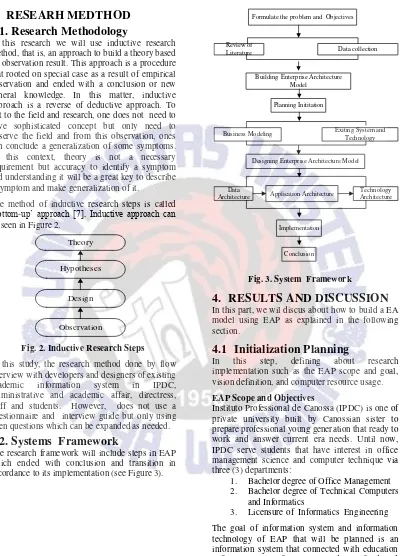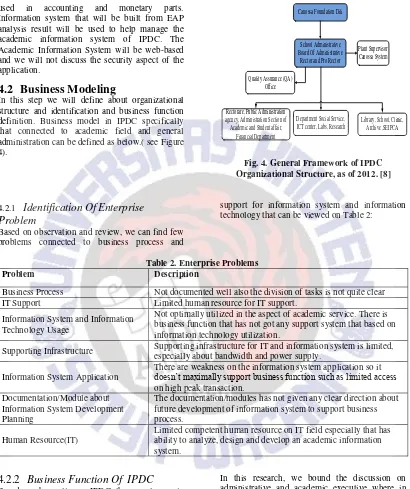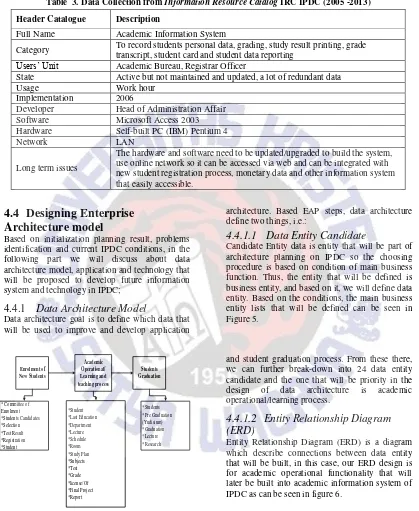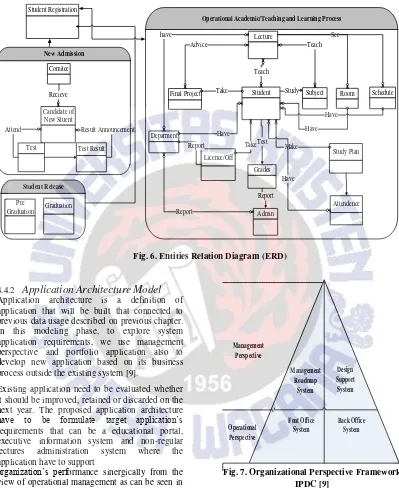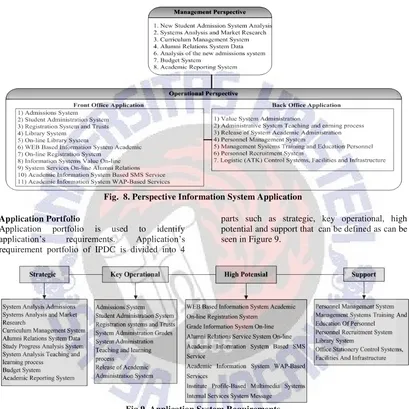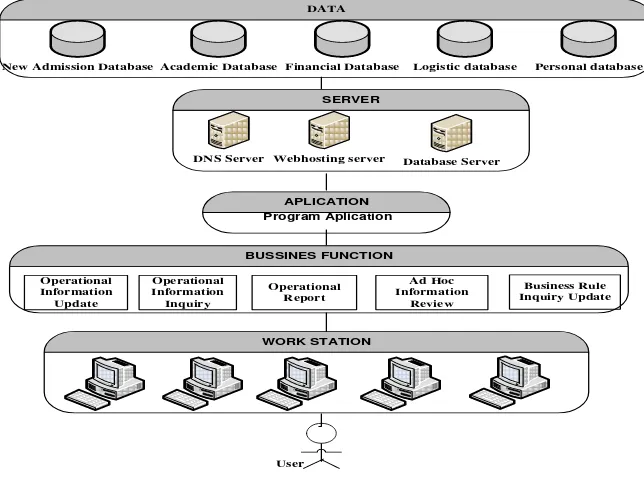The Analysis of Academic Information System
Design of IPDC Dili - Timor Leste
By Using EAP Approach
TESIS
Oleh:
Rita Pires Soares
NIM: 972011901
Program Studi Magister Sistem Informasi
Fakultas Teknologi Informasi
Universitas Kristen Satya Wacana
Salatiga
iii
Pernyataan
Tesis berikut ini:
Judul Tesis
: The Analysis of Academic Information
System Design of IPDC Dili - Timor Leste
By Using EAP Approach
Pembimbing : 1. Prof. Dr. Ir. Eko Sediyono, M.Kom.
2. M.A. Ineke Pakereng, M.Kom.
adalah benar hasil karya saya:
Nama
: Rita Pires Soares
NIM
: 972011901
Saya menyatakan tidak mengambil sebagian atau seluruhnya dari
hasil karya orang lain kecuali sebagaimana yang tertulis pada daftar
pustaka.
Pernyataan ini dibuat dengan sebenarnya sesuai dengan ketentuan
yang berlaku dalam penulisan karya ilmiah.
Salatiga, Desember 2013
iv
Kata Pengantar
Puji syukur penulis panjatkan kehadirat Tuhan Yesus
Kristus karena atas rahmat dan perlindungannya penulis dapat
menyelesaikan Tesis dengan judul “The Analysis of Academic
Information System Design of IPDC Dili - Timor Leste By Using
EAP Approach. Tesis ini penulis susun dalam rangka memenuhi
persyaratan untuk memperoleh gelar
Master of Computer Science
(M.Cs) pada Program Study Magister Sistem Informasi Fakultas
Teknologi Informasi Universitas Kristen Satya Wacana Salatiga.
Dalam penyusunan hingga terwujudnya Tesis ini tidak
terlepas dari bimbingan dan bantuan dari berbagai pihak, untuk itu
pada kesempatan ini penulis mengucapkan terima kasih yang
sebesar-besarnya, terutama kepada yang terhormat:
1.
Seluruh Civitas akademik UKSW yang telah memberikan ijin,
kesempatan kepada penulis dalam menyelesaikan kuliah di sini.
2.
Bapak Dr. Dharma Putra Palekahelu, M.Pd, selaku Dekan
Fakultas Teknologi Informasi Universitas Kristen Satya Wacana
Salatiga.
3.
Bapak Prof. Dr. Ir. Eko Sediyono, M. Kom, Selaku ketua
Program Study Magister Sistem Informasi dan juga sebagai
dosen pembimbing utama yang dengan penuh kesabarannya
membimbing penulis, memberikan masukan-masukan, serta
arahan-arahan hingga terselesainya Tesis ini.
4.
Ibu M.A. Ineke Pakereng , M. Kom, selaku Pembimbing kedua
v
masukan dan arahan dalam proses pembimbingan kepada penulis
hingga Tesis ini terwujud.
5.
Seluruh Dosen Program Magister Sistem Informasi beserta staf
pada Program Pascasarjana UKSW yang telah membekali
penulis untuk selangkah lebih maju hingga Tesis ini terwujud.
6.
Rektor IPDC Sr. Terezinha do M.J.G. Gusmão, FdCC, SPd M.
Ed, beserta seluluh civitas akademik IPDC yang telah
memberikan kepercayaan, dukungan baik moril maupun materil
kepada punulis hingga terselesainya study di UKSW.
7.
Keluarga besarku Pires dan Soares, Mama, Papa, serta saudara/i
ku tersayang (Tonny, Benny, Cisca, Gusty, Lucy) yang dengan
penuh kasih sayang dan ketulusan mendoakan penulis agar
selalu diberi kekuatan lahir dan batin hingga dapat
menyelesaikan pendidikan di Program Pascasarjana UKSW.
8.
Teman-teman terdekatku (Kak Bonnie, Marlin, Catur, Leo,
Felly, Luciana) yang telah memberikan perhatian dan dukungan
penuh kepada saya selama kuliah di UKSW baik dalam suka
maupun duka. Terima kasih banyak atas kebersamaanya. I Love
you All.
9.
Teman-teman seperjuangan ku (Kak Bonnie, Dora, Marlin, Pak
Andy ,Arao, Daniel, Aci) terima kasih banyak atas canda, tawa,
kehangatan, kebersamaannya,bantuan dan dukungan yang
diberikan. Sukses untuk kita semua!
10.
Teman-teman di UKSW dan semua pihak yang tidak dapat
penulis sebutkan satu persatu yang telah membantu penulis
vi
Penulis menyadari sepenuhnya bahwa dalam penyusunan Tesis
ini masih jauh dari sempurna, untuk itu pada kesempatan ini penulis
mohon kritik dan saran untuk penelitian ini. Akhir kata kiranya tesis
ini dapat memberikan manfaat baik bagi penulis sendiri, bagi
Fakultas Teknologi Informasi UKSW Salatiga, IPDC Dili Timor
Leste, maupun bagi semua pihak yang membaca tulisan ini.
Salatiga, Desember 2013
( Rita Pires Soares )
vii
Daftar Isi
Halaman
Halaman Judul ... i
Halaman Lembar Pengesahan ... ii
Halaman Pernyataan ... iii
Kata Pengantar ... iv
Daftar isi ... vii
Daftar Gambar ... ix
Daftar Tabel ... x
Abstrak ... 1
Bab 1. Introduction ... 2
Bab 2. Literature Review ... 2
2.1
Previous Research ... 2
2.2
Enterprise Architecture ... 2
2.3
Academic Information Systems ... 3
2.4
The Difference between EAP and Traditional
Information System ... 3
Bab 3. Research Method... 4
3.1. Research Methodology ... 4
3.2.
Systems Thinking Framework ... 4
Bab 4. Results and Discussion ... 4
4.1. Initialization Planning ... 4
4.2. Business Modeling ... 5
4.3. Existing System and Technology ... 6
4.4. Designing Enterprise Architecture Model ... 6
4.4.1. Data Architecture Model ... 6
viii
4.4.1.2. Entity Relationship Diagram (ERD) 7
4.4.2. Application Architecture Model ... 8
4.4.3. Architecture Technology Model ... 9
4.5. Implementation of Academic Information System
Planning ... 10
Bab 5. Conclusion ... 11
ix
Daftar Gambar
Halaman
Figure 1. EAP Component ... 3
Figure 2. Inductive Research Steps ... 4
Figure 3. System Thinking Framework ... 4
Figure 4. General Framework of IPDC Organizational Structure ... 5
Figure 5. Data Entity Candidate ... 6
Figure 6. Entities Relation Diagram (ERD) ... 7
Figure 7. Organizational Perspective Framework IPDC ... 7
Figure 8. Perspective Information System Application ... 8
Figure 9. Application System Requirements ... 8
Figure 10. Conceptual Networking Architecture Model ... 9
Figure 11. Proposed Business Architecture of IPDC ... 9
x
Daftar Tabel
Halaman
Table 1. Difference between EAP and Traditional Information
System ...
3
Table 2. Enterprise Problems ...
5
Table 3. Data Collection from Information Resources Catalog
International Journal of Computer Application(0975 – 8887)
Volume 84 – No 15, December 2013
IJCATM : www.ijcaonline.org
1
The Analysis of Academic Information System
Design of IPDC Dili - Timor Leste
By Using EAP Approach
Rita Pires Soares
Faculty of Information Technology Satya Wacana Christian
University
Diponegoro Street, 52-60 Salatiga 50711, Indonesia
Eko Sediyono
Faculty of Information Technology Satya Wacana Christian
University
Diponegoro Street, 52-60 Salatiga 50711, Indonesia
[email protected]
M. A. Ineke Pakereng
Faculty of Information Technology Satya Wacana Christian
University
Diponegoro Street, 52-60 Salatiga 50711, Indonesia
mABSTRACT
Development of better information services in an educational institution is necessary for global competition. Information technology can be used to solve the competition problem. One of the roles of technology that can be felt is easy of store, organize and carry out a variety of data collection. Academic information system specifically designed to meet the needs of university in the field of administrative and academic.
This paper discusses information technology that can be applied in universities, especially in Instituto Professional de Canossa (IPDC). Analysis of the design of academic information system at the Instituto Professional de Canossa (IPDC) is done by using the approach of Enterprise Architecture Planning (EAP). The results obtained are the blueprints of architectural planning required in IPDC. This is Includes model data architecture, application architecture and technology architecture. One of the priorities that really need to be implemented is the academic Information System.
The benefits of this analysis is to produce the design of academic information system that can be used as a basis or foundation for the development of academic information system at IPDC so it can not be separated from the universities purpose and does not eliminate the integration between business units in the IPDC . Implementation of application design can be used as a center of academic information services in IPDC.
Keywords
Enterprise Architecture Planning (EAP), Academic Information System, Institute Professional de Canossa (IPDC).
1.
INTRODUCTION
The rapid development of technology and communication, enabling the development of better information services in an educational institution. One of the roles of technology that can be felt is easy to store, organize and carry out a variety of data collection. Academic information system specifically designed to meet the needs of college who want a computerized educational services to improve the performance, quality of service and quality competitiveness of human resources are generated.
International Journal of Computer Application(0975 – 8887)
Volume 84 – No 15, December 2013
IJCATM : www.ijcaonline.org
2
limiting factor to learning systems as well as access to information about activities such as administrative support and staffing and learning activities are very less .
The lack of adoption and utilization of information systems in the operations of an impact on academic activities. Therefore the strategic planning of information systems is the first step that needs to be done to translate the vision and mission to the needs of Information Systems and Information Technology, as well as the development and
implementation of information
systems/information technology on an ongoing basis.
Enterprise Architecture Planning (EAP) is a method used to build and design the architecture of information in IPDC. EAP is a methodology for enterprise architecture planning that focuses on data architecture, application architecture and technology architecture, which is oriented to the needs of the business and how the implementation of an architecture that can support the achievement of organizational goals in the IPDC [1].
This paper examines how to use EAP in analyzing the design of academic information system at the IPDC to improve college governance and aligning business strategy with the application of information technology in a college. Conceptually EA is a strategic information asset base that determines the mission, the information and technology needed to carry out the mission, and the transition process to implement the technology in response to changing needs of the organization in managing administrative and academic education at the IPDC and can improve the image of the Instituto Professionals de Canossa as a college that cares, transparent and a step forward in technology. The scope of the discussion is limited to core areas of the college including the college operations without discussing the methods used in the accounting and finance. Information systems are built from the analysis of the EAP will be used to help manage academic information system at the IPDC. Academic information system created is web-based and does not discuss about security system.
2.
LITERATURE REVIEW
2.1
Previous Research
In the journal, entitled Exploiting Enterprise Architecture Planning for Information Systems Strategic Planning methodology is explained on harnessing the Enterprise Architecture Planning
(EAP) to produce data architecture, application architecture, technology architecture and implementation plan for the enterprise direction for expansion in the future [2].
Researches about Enterprise Architecture Planning usage and utilization had been done in product field [2], that discuss about Enterprise Architecture Planning methodology in achieving strategic goals of an enterprise. Strategic planning begin with information requirements identification and technology utilization to increase enterprise performance. Those planning use EAP methodology to produce data architecture, application and technology for enterprise.
Research entitled "Enterprise Architecture Planning Information System at Private Colleges with the Zachman Framework". The purpose of research is to generate an implementation roadmap information system structured to bring up Enterprise Architecture using the Zachman Framework Planning. [1].
This research will be discussed about the Analysis of academic information system Design in college Instituto Professional de Canossa (IPDC) Dili East Timor by using Enterprise Architecture Planning (EAP) approach, to be able to produce a blueprint of recommendations Enterprise planning and the implementation of information systems is a priority academic college at this time.
2.2
Enterprise Architecture
Enterprise Architecture (EA) is a statement how an organization starts and produce good rules on IT implementations and business process in the organization to increase competitions [3]. EA continuously influencing organization management also technological area in the organization to develop Information System [4] blueprint in many fields, theoretical and practical.
There are methods and framework that can be used, such as Zachman Framework, EAP, EAS, BEAM, TOGAF ADM, GEAF and others that often used in university as references in processing complex system [5]. In this research we will adopt EAP to implement EA in IPDC.
International Journal of Computer Application(0975 – 8887)
Volume 84 – No 15, December 2013
IJCATM : www.ijcaonline.org
3
Fig. 1. EAP Components [2]
2.3
Academic Information Systems
Academic Information System is a resource in theform of information’s that has connection to
academic matters in the college. Academic Information System besides information resource in the college can also be used as communication media between lecturers and students, students and students, lecturers and officials and whoever in the university environment. Due to internet technology used not only in the campus internal but also outside campus as long as there are computers connected to the internet. Academic Information System is a web-based information system that has goal to form Knowledge Based System that can be
accessed via internet, such as student’s personal
data such as [6]:
1) Student Study Plan in accordance to the programmed subject in one semester
2) Student Study Result to know resulting goal in the following lectures and study evaluation results and also its GPA.
3) Lectures scheduling that contain lectures
schedule, student’s activity, monitoring
lecturer’s schedule, and attendance in lecture.
This system information will support university performance in the field of student service up to worker service. But after the fast development of information technology, an university has to always update its information system in order to increase its performance to a better point.
2.4
The Difference between EAP
and Traditional Information
System
EAP has 4 differences with traditional information system design that can be described in table 1 below;
Table 1. Differences between EAP and Traditional Information System [1] Differences Traditional Information System EAP
Functional Business Model Planning begin with a whole definition about
business but a group of analyst asked “What kind of system needed?”
Planning by analyze
“what could be the
critical success
factor?” (“What kind
of information
needed?”)
Application and Data Definition
Defining applications needed then defining what data that has to be processed
Defining data before application
Implementation Roadmap Boundaries
Information system that will be implemented become priority by company executive
Using data
connections to define the implementation boundaries
Consideration of Operational Costs
Focusing exclusively on short term problem. Usually, this approach only emphasize on business area that will give profit on short term.
EAP considering long term business goal. Because of that, EAP will show flexible planning to achieve the goal using reasonable cost.
Initialization planning
Business model Exiting System and
Technology
Architecture Data Architecture
International Journal of Computer Application(0975 – 8887)
Volume 84 – No 15, December 2013
IJCATM : www.ijcaonline.org
4
Theory
Hypotheses
Design
Observation
3.
RESEARH MEDTHOD
3.1. Research Methodology
In this research we will use inductive research method, that is, an approach to build a theory based on observation result. This approach is a procedure that rooted on special case as a result of empirical observation and ended with a conclusion or new general knowledge. In this matter, inductive approach is a reverse of deductive approach. To got to the field and research, one does not need to have sophisticated concept but only need to observe the field and from this observation, ones can conclude a generalization of some symptoms. In this context, theory is not a necessary requirement but accuracy to identify a symptom and understanding it will be a great key to describe a symptom and make generalization of it.
The method of inductive research steps is called
’bottom-up’ approach [7]. Inductive approach can be seen in Figure 2.
Fig. 2. Inductive Research Steps
In this study, the research method done by flow interview with developers and designers of existing academic information system in IPDC, Administrative and academic affair, directress, staff and students. However, does not use a questionnaire and interview guide but only using open questions which can be expanded as needed.
3.2. Systems Framework
The research framework will include steps in EAP which ended with conclusion and transition in accordance to its implementation (see Figure 3).
Fig. 3. System Framework
4.
RESULTS AND DISCUSSION
In this part, we wil discus about how to build a EA model using EAP as explained in the following section.
4.1
Initialization Planning
In this step, defining about research implementation such as the EAP scope and goal, vision definition, and computer resource usage.
EAP Scope and Objectives
Instituto Professional de Canossa (IPDC) is one of private university built by Canossian sister to prepare professional young generation that ready to work and answer current era needs. Until now, IPDC serve students that have interest in office management science and computer technique via three (3) departments:
1. Bachelor degree of Office Management 2. Bachelor degree of Technical Computers
and Informatics
3. Licensure of Informatics Engineering
The goal of information system and information technology of EAP that will be planned is an information system that connected with education enforcement specifically in academic field and general administration that include university operational activities without discussing methods
Formulate the problem and Objectives
Data collection Review of
Literature
Building Enterprise Architecture Model
Planning Inititation
Business Modeling Exiting System and
Technology
Designing Enterprise Architecture Model
Data
Architecture Application Architecture
Technology Architecture
Implementation
International Journal of Computer Application(0975 – 8887)
Volume 84 – No 15, December 2013
IJCATM : www.ijcaonline.org
5
used in accounting and monetary parts. Information system that will be built from EAP analysis result will be used to help manage the academic information system of IPDC. The Academic Information System will be web-based and we will not discuss the security aspect of the application.
4.2
Business
Modeling
In this step we will define about organizational structure and identification and business function definition. Business model in IPDC specifically that connected to academic field and general administration can be defined as below.( see Figure 4).
Fig. 4. General Framework of IPDC Organizational Structure, as of 2012. [8]
4.2.1
Identification
Of
Enterprise
Problem
Based on observation and review, we can find few problems connected to business process and
support for information system and information technology that can be viewed on Table 2:
Table 2. Enterprise Problems
Problem Description
Business Process Not documented well also the division of tasks is not quite clear
IT Support Limited human resource for IT support.
Information System and Information Technology Usage
Not optimally utilized in the aspect of academic service. There is business function that has not got any support system that based on information technology utilization.
Supporting Infrastructure Supporting infrastructure for IT and information system is limited, especially about bandwidth and power supply.
Information System Application
There are weakness on the information system application so it
doesn’t maximally support business function such as limited access
on high peak transaction. Documentation/Module about
Information System Development Planning
The documentation/modules has not given any clear direction about future development of information system to support business process.
Human Resource(IT)
Limited competent human resource on IT field especially that has ability to analyze, design and develop an academic information system.
4.2.2
Business Function Of IPDC
Based on observation on IPDC, there are two main functions that happened in IPDC, i.e., [8]1. Administrative and academic executive that including field on new student registration, academic operational (learning process) and academic graduation.
2. Supportive role that include monetary and accounting, human resource management, and department area.
In this research, we bound the discussion on administrative and academic executive where in the implementation of information system more emphasized on academic/learning process.
4.3
Existing System and
Technology
On its first two years since its built (2003), IPDC did not use any information system and technology to support its academic activities. In year 2005,
Canossa Foundation Dili
School Administrative Board Of Administrative
Rector and Pro Rector
Plant Supervisor Canossa System
Quality Assurance (QA) Office
Rectorare, Public Administration agency, Administration Section of Academic and Student affair,
Financial Department
Department Social Service, ICT center, Labs, Research
International Journal of Computer Application(0975 – 8887)
Volume 84 – No 15, December 2013
IJCATM : www.ijcaonline.org
6
Enrolment of New Students Academic Operational/ Learning and teaching process Students Graduation
* Committee of Enrolment *Students Candidates *Selection *Test Result *Registration *Student *Students *Pre Graduation (Yudisium) *Graduation *Lecture *Research *Student *Last Education *Department *Lecture *Schedule *Room *Study Plan *Subjects *Test *Grade *license/Of *Final Project *Report
IPDC begin to use academic information system as described in table 3 below;
Table 3. Data Collection from Information Resource Catalog IRC IPDC (2005 -2013) Header Catalogue Description
Full Name Academic Information System
Category To record students personal data, grading, study result printing, grade transcript, student card and student data reporting
Users’ Unit Academic Bureau, Registrar Officer
State Active but not maintained and updated, a lot of redundant data
Usage Work hour
Implementation 2006
Developer Head of Administration Affair
Software Microsoft Access 2003
Hardware Self-built PC (IBM) Pentium 4
Network LAN
Long term issues
The hardware and software need to be updated/upgraded to build the system, use online network so it can be accessed via web and can be integrated with new student registration process, monetary data and other information system that easily accessible.
4.4
Designing Enterprise
Architecture model
Based on initialization planning result, problems identification and current IPDC conditions, in the following part we will discuss about data architecture model, application and technology that will be proposed to develop future information system and technology in IPDC;
4.4.1
Data Architecture Model
Data architecture goal is to define which data that will be used to improve and develop application
architecture. Based EAP steps, data architecture define two things, i.e.:
4.4.1.1
Data Entity Candidate
Candidate Entity data is entity that will be part of architecture planning on IPDC so the choosing procedure is based on condition of main business function. Thus, the entity that will be defined is business entity, and based on it, we will define data entity. Based on the conditions, the main business entity lists that will be defined can be seen in Figure 5.
Fig. 5. Data Entity Candidate
Based on Figure 5, we know that there are three main business functions in IPDC, i.e. new student registration, academic operational/learning process
and student graduation process. From these there, we can further break-down into 24 data entity candidate and the one that will be priority in the design of data architecture is academic operational/learning process.
4.4.1.2
Entity Relationship Diagram
(ERD)
International Journal of Computer Application(0975 – 8887)
Volume 84 – No 15, December 2013
IJCATM : www.ijcaonline.org
7
Operational Perspective Management Perspective Font Office System Back Office System Management Roadmap System Design Support System
Fig. 6. Entities Relation Diagram (ERD)
4.4.2
Application
Architecture
Model
Application architecture is a definition of application that will be built that connected to previous data usage described on previous chapter. In this modeling phase, to explore system application requirements, we use management perspective and portfolio application also to develop new application based on its business process outside the existing system [9].Existing application need to be evaluated whether it should be improved, retained or discarded on the next year. The proposed application architecture
have to be formulate target application’s
requirements that can be a educational portal, executive information system and non-regular lectures administration system where the application have to support
organization’s performance sinergically from the view of operational management as can be seen in figure 7.
Fig. 7. Organizational Perspective Framework IPDC [9]
Based on Figure 7, we can see that the portfolio for information system application that needed by IPDC can be grouped into two main parts, i.e. Management perspective and Operational perspective. Student Subject Grades Student Registration Deparment Lecture Room Final Project Licence/Off Attendence Pre
Graduation Graduation Comitee
Candidate of New Stuent
Test Test Result
Teach Teach Test Take Advice Have have Take Admin Report Report See Study Plan Schedule Report Have Study Have Make Have Recieve
Attend Result Announcement
New Admission
Operational Academic/Teaching and Learning Process
International Journal of Computer Application(0975 – 8887)
Volume 84 – No 15, December 2013
IJCATM : www.ijcaonline.org
8
Management Perspective
Management perspective can be grouped into sub-parts, i.e. management reporting system and decision support system. Operational perspective
can be grouped again into Front Office System and Back Office System that can be further broken-down as seen in Figure 8.
Fig...8. Perspective Information System Application
Application Portfolio
Application portfolio is used to identify
application’s requirements. Application’s
requirement portfolio of IPDC is divided into 4
parts such as strategic, key operational, high potential and support that can be defined as can be seen in Figure 9.
Fig 9. Application System Requirements
4.4.3
Architecture Technology Model
In this technology architecture, we will describe enterprise network architecture and business system architecture of IPDC based on gathered business system on the preceding steps. NetworkInternational Journal of Computer Application(0975 – 8887)
Volume 84 – No 15, December 2013
IJCATM : www.ijcaonline.org
9
Academic Database Personal database
New Admission Database Financial Database Logistic database
DNS Server Webhosting server Database Server DATA
SERVER
APLICATION
WORK STATION Program Aplication
BUSSINES FUNCTION
Operational Information
Update
Operational Information
Inquiry
Operational Report
Ad Hoc Information
Review
Business Rule Inquiry Update
User
Fig.10. Conceptual Networking Architecture Model
Based on conceptual networking architecture in Figure 10, we need to propose Business System Architecture in IPDC that can be seen on Figure 11.
Fig. 11. Proposed Business System Architecture of IPDC
4.5
Implementation of Academic
Information System Planning
Based on analysis result of EAP concerning about proposed data architecture, data application model and technology architecture model, the information system application that become priority to be implemented in IPDC is web-based AcademicInformation System describe in Data Flow Diagram (DFD), that can be seen in Figure 12.
Wireless Access
Library
Department
Distance Learning Administrative Affair
Computer Lab FTP Sever
Mail Server
Management Server Web server
Content Management
Database server Application Server
International Journal of Computer Application(0975 – 8887)
Volume 84 – No 15, December 2013
IJCATM : www.ijcaonline.org
10
Subject Room Schedule User
(Admin,Lectur & Student
Study Plan Departmen
t
Final Project Data Room
Student License/Off
Data Subject Data Department
Data Student Off
Data Schedule
Data Study Plan Data Final Project
Table Student Off
Table
Departmet Table Subject Table Room
Tabel Schedulet
Table Study Plan
Table Final Project Data Grade
Management Grade
Student
Lecture
Data Student
Data Lecture
Data Student Off Data Department
Data SubjectData Room
Data ScheduleData Study Plan
Data Final Project
Table Lecture Data Lecture
Table Grade Data Grade
Data Lecture
Report Data grade Report
Table Student Data Student
International Journal of Computer Application(0975 – 8887)
Volume 84 – No 15, December 2013
IJCATM : www.ijcaonline.org
11
5.
CONCLUSION
Based on EAP analysis result above, we can conclude that:
- Enterprise Architecture analysis is needed to develop information system in IPDC.
- Analysis of EA, data, application and technology can be utilized by IPDC as a base for developing an information system so the development does not miss from the IPDC goal and does not nullify the integration between business unit on IPDC. - There are 4 main part of application system
requirements as describe in page 8 that will be implement at IPDC, however this study only discuss about academic information system.
In this study adopted EAP framework to implement EA in IPDC. Therefore, the future research can be developed by;
- Using others methods and framework such as Zachman Framework, EAP, EAS, BEAM, TOGAF ADM, GEAF.
- Implementing the suggested application model based on researcher needs.
- Including the risk of management component in order to implement EAP planning.
- Choosing exact application and support organization business functionality however the benefit will be optimum.
6.
REFERENCE
[1] Kurniawan B, 2010. Enterprise architecture planning sistem informasi pada perguruan
tinggi swasta dengan zachman framework,
majalah ilmiah UNIKOM, Vol.9. No1, FTI,
page 2, 6-7.
[2]Surendro K. 2007.
Pemanfaatan enterprisearchitecture planning untuk perencanaan
strategis sistem informasi. Jurnal informatika,
Institut Teknologi Bandung (ITB), Vol 8, No 1, page 3-5
[3] Ross,Westerfield, and Jaffe. 2002. Corporate Finance, Mcgraw-Hill College,
[4] Doucet, De Freitas and Gordon, 2008. Efficient Block Sampling Strategies for Sequential MonteCarlo”.
https://www.google.com/#q=Efficient+Block+S ampling+Strategies+for+Sequential+MonteCarl o
[5] Yunis,R.Surendro K.Panjaitan.E.S. 2010,
Pengembangan Model EA Untuk Perguruan
Tinggi. Jurnal Ilmiah Teknologi Informasi. Vol
8. No1. 9-18
[6] Mochamad A, 2005. Pemanfaatan Media Web Site Sebagai Sistem Informasi Akademik Dan
Sarana Pembelajaran Mandiri Dalam
Pengaruhnya Dengan Prestasi Belajar
Mahaiswa, Jurnal Stikom Vol.6 No. 2
[7]
Edward G.A, Pendekatan deduktif dan induktifdalam penelitian, access from
http://arismanedwardgulo.blogspot.com/
[8] MJ.G.Gusmão T, dos Reis F dan Pereira O. 2012. Manual Admin IPDC Dili Timor Leste,,
IPDC Dili Timor Leste.
Rita Pires <[email protected]>
IJCA December 2013 Edition: Letter of Acceptance
5 pesanEditor IJCA <[email protected]> 6 Desember 2013 18.31
Kepada: Rita Pires <[email protected]>, Eko Sediyono <[email protected]>, [email protected]
Dear Rita Pires Soares, Eko Sediyono and Ineke Pakereng,
We are delighted to inform that your research paper has been “Accepted for
Publication” in International Journal of Computer Applications (IJCA) December 2013Edition.
Paper Title: The Analysis of Academic Information System Design of IPDC Dili - Timor Leste by using EAP Approach
Paper Reference ID: pxc3892921
The important deadlines regarding publication are as follows:
Camera ready paper submission : December 16, 2013
Copyright transfer : December 16, 2013 (IJCA Copyright Form)
Publication fees transfer : December 16, 2013
The research article will be published in IJCA Digital Library on December 18, 2013.
All the selected papers will be published in IJCA Digital Library with initial indexing with Google Scholar, CiteSeer, UlrichsWeb and ScientificCommons Index, University of St. Gallen, Switzerland. The articles are also indexed with SAO/NASA ADS Physics Abstract Service supported by Harvard University and NASA, Informatics and ProQuest CSA Technology Research Database. International Journal of Computer Applications is a voting member of CrossRef, USA and each of its research articles is allotted a unique DOI reference.
Article Processing Fees
Processing charge for each general paper : USD 62.50
The Charges includes publication, indexing, maintenance of link resolvers and journal infrastructures.
Payment Transfer: Please use the “IJCA Payment Gateway” powered by
Alternatively, the charges can be transferred using wire facility via banks.Find attached the Payment Instructions for the same. The invoice/ receipt will be delivered to you on subject to realization of the payment.
You are requested to re-submit your paper as Camera Ready Copy (CRC) in DOC/ DOCX and/or Latex file format conforming to the prescribed IJCA Paper Template on or before December 16, 2013. Also find attached the copy of the Review Report upon your research article along with the IJCA template.
IMPORTANT: Conformance to IJCA template is mandatory for inclusion and citation with Google Scholar, CiteSeer, UlrichsWeb, NASA ADS and ProQuest CSA Technology Research Database.
Thank you for your association with IJCA.
Best regards,
Editorial Support Team, International Journal of Computer Applications,
Foundation of Computer Science, New York, USA.
www.ijcaonline.org
[ Call for Paper (Open): http://www.ijcaonline.org/calls- ]
3 lampiran
IJCA Paper Template.docx
24K
Payment Instructions.pdf
51K
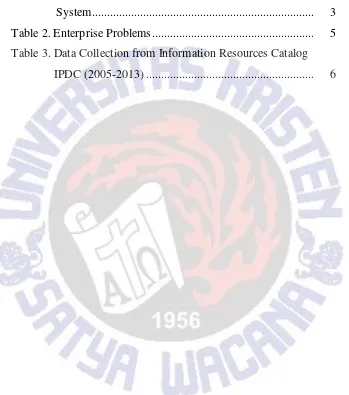
![Fig. 1. EAP Components [2]](https://thumb-ap.123doks.com/thumbv2/123dok/687821.450883/15.516.53.466.151.615/fig-eap-components.webp)
